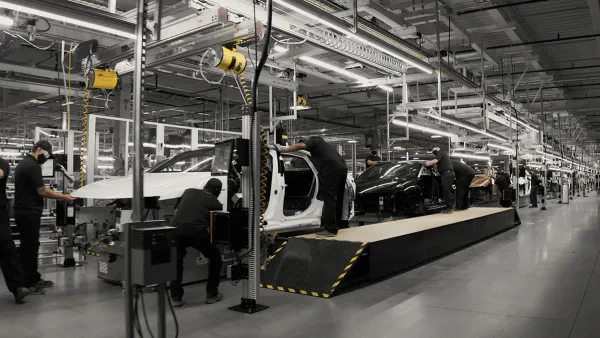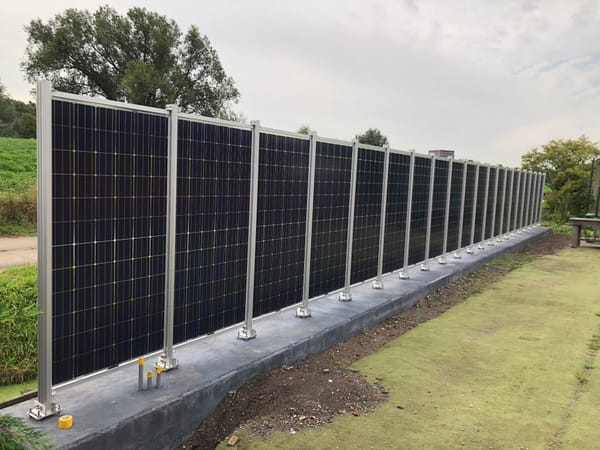Secondary effects, AC makers, and utilities living large
It’s a great time for air conditioner manufacturers. It’s generally getting hotter, so people are using more air conditioning, stressing electrical grids like never before. The world added an estimated 1 billion air conditioner units since 2005, and w
1. Air conditioner manufacturers and local utilities are living large
It’s a great time for air conditioner manufacturers. It’s generally getting hotter, so people are using more air conditioning, stressing electrical grids like never before. The world added an estimated 1 billion air conditioner units since 2005, and will add another 1 billion by 2030, according to the International Energy Agency. While fast-growing countries like China and India are adding AC, it’s also traditionally cool places like Seattle, which in 2013, less than a third of homes had AC. Now it’s more than half.
To stay operational, electrical grids have to maintain a certain level of current. If there’s not enough to serve the demand, parts of the grid start to shut down, and you get a blackout. If there’s too much current, parts overload, and you get a blackout. To keep running, grid operators balance the amount of power they’re generating with customer demand with any interconnections they might have with grids next door. Maybe the folks next door have more power available: open up a connection and let it flow. Maybe they need some of your extra: open up a connection.
But electrical grids in the U.S., Europe, and most of the world were built for small levels of local sharing, with not enough interconnections or long-distance transmission to bring the fast-expanding wind and solar power generated in remote areas to dense metropolises that greedily suck down power.
Power demand tends to grow once you hit 80-degrees Fahrenheit, and then grows explosively as you close in on 100-degrees. So, as more electricity customers add AC, and temperatures are more regularly crossing the 100-degree mark, grids strain – and risk collapse – more and more. When grids are maxed out, they either have to institute rolling blackouts, where sections of a grid alternate blackouts, or they collapse, as the Texas grid almost did in February 2021, because too many electric heaters activated at the same time (basically the same problem as too many air conditioners). A collapse is worse, because it causes massive transformers to fail in a lightning fast sequence, which risks damage to power generators, a kind of damage that can take weeks or months to repair and requires highly expensive parts that tend to be in low supply.
The U.S. electrical grid is run by a patchwork of low/no-profit companies jointly owned by utility companies, who often have monopoly control over their part of the grid. You want to get power from Indiana to Iowa? You gotta get the Illinois utility on board first.
There’s almost no infrastructure comparison to electricity. Highways? All controlled by the feds. Long distance phones? Once all controlled by AT&T. Pipelines? Those have scattered ownership, but the transparent and liquid markets for oil and gas keep the fossil fuels flowing. Electricity’s markets are non-transparent because they are so immediate. You need electricity now and I’m the power plant connected to your locally regulated utility grid? Well, I’m gonna charge you an arm and a leg, and you gotta pay now. Oh, also, the power plant connected to your grid is owned by a non-regulated subsidiary of the holding company that owns the local regulated utility. So really, you’re just paying the guy your boss already owns. That’s how they make the big bucks.
So, you can see, there’s good reasons why utilities don’t want to improve their local grids. Blackouts are just fine for them, because that’s when they’re really making money. Until Congress nationalizes the grid, or strips utility control, don’t expect the grid to get any better.
2. The secondary effects of charging stations
One of my most favorite things to think about are secondary effects, the unforeseen “second domino” that only falls because the first one happened. For instance: Walmart is a secondary effect! American mass adoption of cars led to the possibility of Walmart, which sucks up commerce from people able to drive long distances for discounts. Before Walmart, people in small towns shopped at often high-priced local general stores that they could walk to or ride a horse to in a couple hours.
Now, all those cars converting from fossil fuels to electricity are creating a whole series of secondary effects. For instance, a fast-growing new demand on electricity grids. More opportunities for blackouts!
But also, the need to charge EVs is creating new infrastructure opportunities. Like, will people still go to gas stations? The chargers owned by Tesla and Electrify America tend to be free-standing, in a parking lot. Where do we go if we need expensive milk, Slim Jims, or in the American South, mouthwatering biscuits?
But also, charger formats! Here, like the incredibly stupid battle over USB-C and Lightning formatted chargers for our phones, is a fight between Tesla’s North American Charging Standard and the federally-endorsed Combined Charging System. Everyone but Tesla uses CCS, but Tesla has the biggest, best charger network, and GM, Ford, and Rivian just signed deals for their cars to use the Tesla network (while Hyundai is considering it), so you can expect those companies to change the plugs on their cars to match the Tesla system.
What’s a charger format worth? Well, you get people to use your format, it means they have to use your dongle, and you essentially lock in car owners to whatever you want to make them pay. And they have to go where your chargers are located. Like maybe at Tesla-licensed Circle K’s, AM/PMs, and Kum and Go’s across the country.
Oh, but let’s go even more upstream: To the electricity itself. Maybe enterprising utility companies decide to get into the charging game: They could sign a deal to license Tesla chargers and sell electricity directly to drivers, cutting out the middleman to make lotsa dough – kinda like brewers running brewpubs. Or they could crown winners and losers in the charger wars, by building transmission and transformers at lower rates (or just by doing it at all) for the charger companies they cut deals with.
Where do these new charging stations go? And how do they work, especially since charging EVs tend to be captive for much longer than internal combustion vehicles. It’s easy to imagine how mega truckstop places on the interstate adapt – people already spend an hour there taking showers, looking at gew-gaws in the shop, and eating at the Cracker Barrel. But what about in suburbs and cities? Does everyone charge up at home now? Or are there places to charge up while you shop? And as batteries rapidly improve, will we always need 20-90 minutes to charge while on a trip?
What happens to old gas stations? Most of the 145,000 existing gas stations are an environmental mess, with leaky tanks that have to be removed and soil that cost an average $1 million to clean up, according to Grist. Do we keep these places as people move to EVs and just put in some chargers? OK, what do people do while they wait for their cars to charge? Imagine you’re at a suburban gas station: It’s probably an outbuilding at a grocery store mall, with a Chick-fil-a, a Sonic, and a Starbucks nearby – but not really a pleasant walk across parking lots and driveways. Do people keep going to these ugly places? What happens to them?
EVs are bringing a brave new world out there, and I don’t think anyone knows what it’ll look like.
3. GOPers energy and climate orthodoxy
The U.S. federal government is vast. And not just in terms of dollars spent or employees employed, it is the proverbial sleeping bear that could roll ever at any minute to either crush you or eat you in just one gulp. As even a low level policy staffer in the federal government, you quickly realize that daily policy decisions you make can impact tens of thousands of people, every few months you make one that impacts millions, and every couple of years you play a part in one that impacts hundreds of millions of people.
While presidential candidates tend to claim they take “moderate” positions on various policy issues, with few exceptions, political parties tend to attract policymakers that follow policy orthodoxies. Then, when people become president, to fill the thousands of political policy positions they turn to policy orthodox to fill them entirely because they are party loyalists.
For energy policy, Democrats are pro-climate, pro-green, anti-fossil. Republicans are pro-fossil, anti-climate, anti-green. Are there exceptions? Sure! I once worked for one! But they are screamingly rare, and because they are non-orthodox, tend to end up as window dressing, while the party orthodox go off on their happy way.
Last week the New York Times had a fun overview of the GOP 2024 presidential candidate views on climate change. Generally? Climate change isn’t a big deal, they all say. We need more oil and gas. This shouldn’t be a big surprise to anyone breathing.
But then ClimateWire had an amazing rundown on the various GOP think tankers who are likely to really make climate and energy policy if a Republican president is elected next year. What’s fun to see – and supportive of my whole “policy orthodox” theory, is that pretty much no matter which GOPer gets elected, Trump, Christie, or DeSantis, we should expect some collection of think tank, anti-climate orthodoxers to be put in charge of DOE, EPA, FERC, and wherever else energy and environmental policy is made.
The message here is: There are no “shades of gray” when it comes to climate policy. It’s either pro-climate or anti-climate. The think tanks have already decided for you.
Other Things Happened
- Recently, Kemper became the fourth major insurance company to halt new home insurance policy offerings in California. And last week, Nationwide Insurance announced plans to revisit its commercial policy offerings in the Sunshine State. Meanwhile in Florida, home insurance costs have risen 57% since 2015.
- Delta Airlines is fighting a class-action suit for greenwashing with claims of carbon-neutrality.
- When people in the U.S. move because of climate change, they usually stay local, a recent report found.
- Ukraine is already thinking about rebuilding. Early thoughts call for $40 billion in aid.
Congrats, you made it to the bottom of the newsletter. Here is the 80’s tune I would live with on repeat forever.





